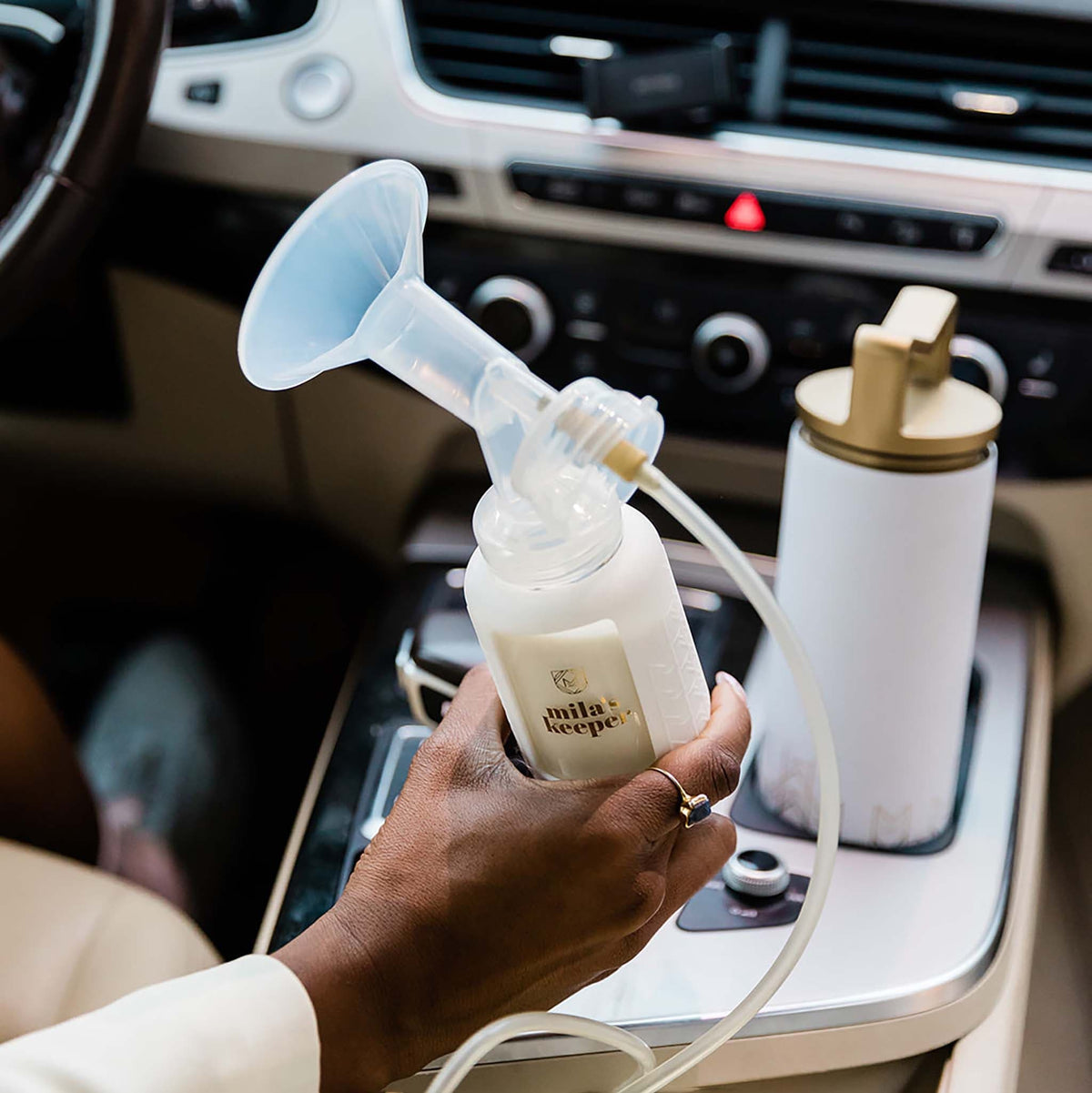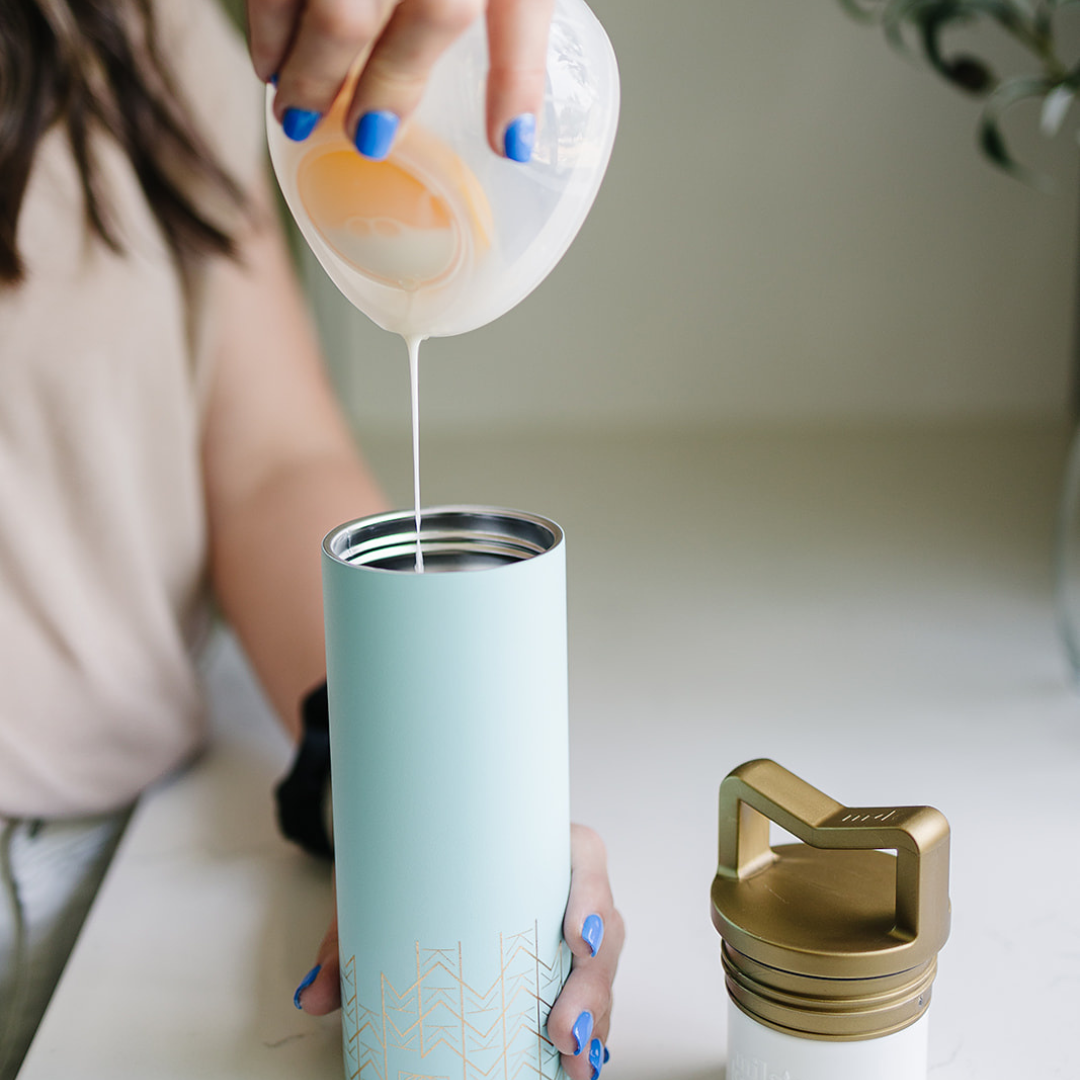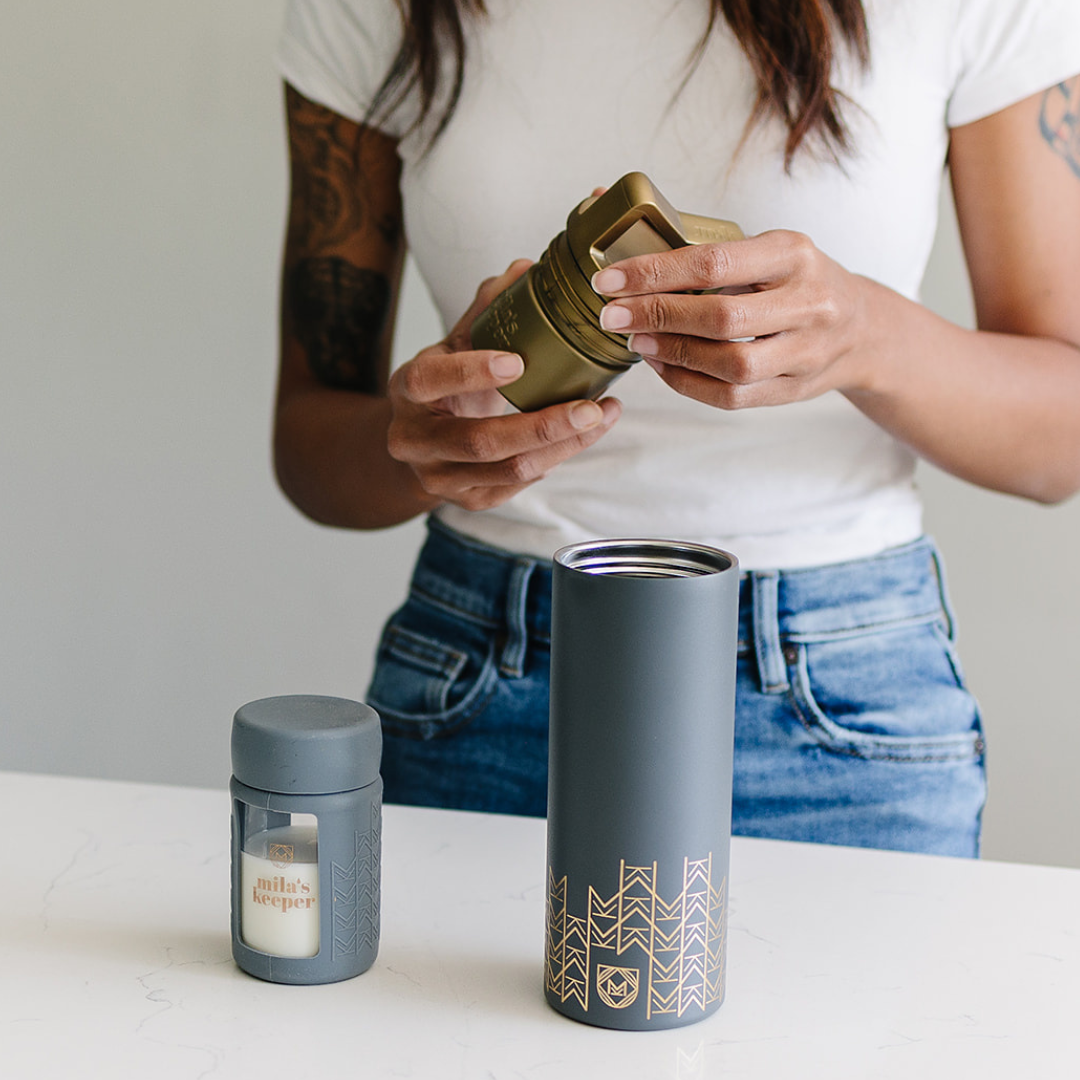New moms make so many choices.
Have you ever thought about how your breastfeeding journey has been impacted by family patterns and cultural practices?
The third week of August is Asian American Native Hawaiian and Pacific Islander Breastfeeding Week (AANHPI), so it's a great time to dig into some of these questions!
See Related: August Is National Breastfeeding Awareness Month
1. Identifying the issues and making a change
The choice to breastfeed is impacted and influenced by several factors. For some, it may not even seem like much of a choice.
We often follow the practices of proceeding generations or accept the norms of our communities. Occasionally, it takes a few independent-minded individuals who encounter resistance to really shake things up.
To-wen Tseng is one such individual.
After having personally encountered shaming, harassment, and misinformation as a breastfeeding mom attempting to pump breastmilk into a clean breast milk cooler at her place of work (a Chinese-language newspaper based in Los Angeles), To-wen Tseng Tseng took action.
Tseng is a woman of Asian descent and a working mom to two children. At the time, she had given birth to her first child, Jade, and returned to her job with the intention of pumping. She hoped to provide her son with all the health benefits of breastmilk.
However, things didn't go so smoothly.
As Tseng has recounted in blogs and elsewhere, there wasn't a sanitary and comfortable space where she could pump. She sat in a bathroom stall - on the floor - and had to deal with colleagues pounding on the door and complaining to superiors about her use of the space.
When she washed her breast pump parts in the kitchen, her co-workers mocked her and made comments about how it was like "washing dirty panties" in the office.
As if those obstacles weren't enough, when she shared her frustration with a supervisor, she was told that formula-fed infants were healthier anyhow, so she should cease her breastfeeding efforts.
Not only was that overstepping boundaries, but it was incorrect information. It's widely recognized that breast milk contains the nutrients that are best for your baby.
When Tseng talked to her human resources department, they claimed they weren't aware of the breastfeeding laws.
This personal experience and her awareness of other barriers to breastfeeding for women in Asian and Asian Pacific Islander communities compelled her to act.
Tseng helped found a coalition called Asian Breastfeeding Task Force of Greater Los Angeles. This later became Asian Pacific Islander Breastfeeding Task Force, or API Breastfeeding Task Force (or APIBTF).
The Task Force set several goals and initiated the Asian American Native Hawaiian and Pacific Islander (AANHPI) Breastfeeding Week, which went into effect with support from the Los Angeles County Board of Supervisors.

2. Breaking down systemic barriers to breastfeeding
The API Breastfeeding Task Force, AANHPI Breastfeeding Week, and other breastfeeding advocacy groups have many goals and hopes.
One of those is to break down barriers to breastfeeding that exist in the workplace and other areas of our society.
Creating safe, clean, private places for breastfeeding moms to pump is a priority. People shouldn't have to squat on a dirty bathroom floor or sit on a toilet seat while they express. Plus, it's not a sanitary environment for pumping or transferring breast milk.
While many advancements have been made - like our glass breast milk storage containers - this is a sign there's still room for improvement.
Certain professions have particular challenges, and some employers are resistant to the idea, or don't think it's worth the investment of time or resources. Even when there is little to no cost to bear, individuals in charge can dismiss the idea as unnecessary or unprofessional.
Federal workplace protections leave out lactation considerations for many professionals like teachers, nurses, and agricultural workers. Long shifts, lack of employer will, and absence of private space all pose challenges.
If we want to increase breastfeeding rates and encourage mothers to pump when they're away from their nursing infants, we have to advocate for fair laws.
We can help agencies and groups that push for progress, and do what we can as individuals to increase awareness of the needs and challenges of nursing mothers.
In 2010 the Break Time for Nursing Mothers was passed, which required employers to provide a reasonable break time and a private space for breastfeeding employees. Unfortunately, this only applied to certain workers and left out some of the aforementioned professions.
The Providing Urgent Maternal Protections (PUMP) for Nursing Mothers Act would have addressed these loopholes by expanding workplace protections and clarifying employer obligations. However, the bill - widely supported by health and education organizations - recently failed to pass the Senate.
In other words, there's still work ahead when it comes to removing systemic barriers that prevent breastfeeding from flourishing.
3. Normalizing breastfeeding in Asian American, Native Hawaiian, and Pacific Islander communities
In Asian American communities, negative perceptions of breastfeeding can influence women's decision of whether or not to breastfeed. Social norms are pretty powerful, and those in our immediate surroundings typically have the greatest impact.
Mothers-to-be who receive support from family and friends are more likely to initiate and continue breastfeeding.
This means education efforts should include outreach to families, in addition to targeting individuals. Health workers and breastfeeding advocates may want to suggest support groups or other resources for the entire family.
With close-knit family structures, like those in the Asian, Pacific Islander, and Native Hawaiian communities (among others), it's common for new moms to be cared for by (and co-habitate with) their mother or other older women in the family as they rest and care for their newborn.
Since different generations may have varying levels of comfort around breastfeeding, this is another reason to take a more familial approach in outreach efforts. It's important to have discussions that focus on the health of the infant and find ways to address other cultural concerns.
One of those concerns may be around modesty. Researchers in a study with postpartum Chinese women found that many felt shame about breastfeeding in public because of the perception that breasts are primarily sexual objects.
Some assumptions have persisted despite evidence to the contrary, such as the idea in some areas of China that babies should not be breastfed too soon after birth.
While that study was conducted in China, many of these sentiments are passed down and persist. Even for Asian Americans who have lived in the states for generations, some of these cultural assumptions and conversations among family members can affect decisions about breastfeeding.
One of the first projects of the Asian Pacific Islander Breastfeeding Task Force was to launch a photo project of breastfeeding moms. This project was, in part, a response to an Op-Ed published by that same Chinese-language newspaper where Tseng previously worked that claimed breastfeeding images were "disturbing and disgusting."
Asian breastfeeding advocates hope to reclaim and promote the natural process of breastfeeding.

4. Pushing back against the advertising by formula companies
Companies that produce and sell baby formula or milk substitutes have sometimes targeted vulnerable or low-income areas in their advertising and promotion campaigns. They have even made erroneous health claims or underplayed the enormous benefits of breast milk.
Wendy Fung, Registered Dietitian Nutritionist and Co-founder of Asian & Pacific Islander Breastfeeding Task Force agrees with To-wen Tseng that the aggressive tactics used in the marketing of infant formula pose problems for parents considering breastfeeding.
Claims from formula companies sow seeds of doubt for moms worried about providing enough milk for their little ones. When parents are second-guessing their choices or confused by competing nutrition information, it can impact the initiation and duration of breastfeeding.
That's why the World Health Organization (WHO) established the International Code of Marketing of Breast-milk Substitutes (the Code) in 1981.
The Code encourages regulations around the marketing of formula. For example, it suggests that there shouldn't be images that idealize infant formula or claim that it is equivalent to or better than breastfeeding.
The U.S. has not implemented any legal measures, and other countries have varying degrees of adherence to the code.
In China, breastfeeding rates hover around 30%, which is below the global average of 43%. China consumes one-third of global powder formula sales even with only one-fifth of the world's population (and far less than one-fifth of the world's newborns). There are ongoing efforts in that country to implement regulations to address this situation.
In the Pacific region, there are attempts to protect parents from the promotional campaigns of the formula companies. Dr. Corinne Capuano, a World Health Organization representative who supports breastfeeding and child nutrition efforts in Pacific island countries, says that while progress has been made, it's important to support legal measures that provide some protection from formula advertising.
Promotional materials for formula find their way to expectant mothers through social media (Facebook, Instagram, etc.), medical offices, and other avenues. And while there are some instances where formula is needed to supplement or replace breast milk, it's not the norm.
As we await formal regulations, organizations and individuals will continue to combat misinformation and provide support for families who want to try breastfeeding.
5. Increasing Asian breastfeeding rates for the health of the infant and mother
Several obstacles that may prevent breastfeeding from flourishing in API communities.
Awareness and action are key to changing course. That's why AANHPI Breastfeeding Week is supporting breastfeeding education and advocacy efforts in Los Angeles county and beyond.
It's important to share resources and provide prenatal education in a community so that even before the birth of a baby, families feel prepared.
The end goal is to have healthy babies and moms.
There's ample evidence demonstrating how the nutrients in breast milk are better absorbed, and support a baby’s brain growth and nervous system development. Certain fats in breast milk can even help a baby's eyes work better, especially when that milk is stored in proper containers.
Babies who are breastfed have far fewer lung, digestive, and ear infections.
On top of the countless benefits for the baby, there are also health advantages for a breastfeeding mom.
Women who breastfeed their babies tend to recover from childbirth faster than those who do not. Breastfeeding may also reduce the risk of certain cancers and lower the propensity for diabetes, hypertension, and some cardiovascular diseases.
There can also be a very special mother-child connection that comes with breastfeeding. However, when a woman has difficulty making that connection (either the physical latch or an emotional bond), it's important to have support practices in place.
A new mom should know where to reach out to find resources and receive support in her community. Having a newborn can be overwhelming, and some folks feel shame in asking for help.
For the health and well-being of both mom and baby it really takes a village.

6. Connecting nursing mamas with their local communities
Creating a sense of community is critical for our well-being. Fostering a sense of belonging for new breastfeeding mothers can impact the postpartum experience.
Parents who feel supported in their breastfeeding journey will likely stick with it a little longer.
If you have nursed a child then you know there may be questions and concerns that pop up along the way. Whether it's getting into the nitty gritty about sore or cracked nipples, or just talking about cute maternity tops, being able to talk to others who have gone through this before is very beneficial.
Gathering together with others who have a similar background may provide unique cultural insight into your own situation.
A new mom might have questions about how to deal with certain customs or beliefs in their extended family, and someone else of that ethnic group or culture may have had the same experience and be able to share their approach to the situation.
If we want to promote breastfeeding among a broad population, it's important to have videos, services, and other materials in multiple languages. Given that Los Angeles County's Asian population of over 1 million includes people who speak Mandarin, Cantonese, Tagalong, Korean, and Japanese (just to name a few), it's certainly something to consider.
Here's something we came across in our research that seems worthy of a share: From Mothers to Mothers: A Collection of Traditional Asian Postpartum Recipes.

7. Advocating for culturally competent lactation professionals
The Asian Pacific Islander Breastfeeding Task Force and other breastfeeding advocacy groups aim to decrease inequities across economic, ethnic, and other lines.
Every mom who has the desire to breastfeed should breastfeed. This is the stance of breastfeeding advocacy groups that want women of all backgrounds to feel supported and encouraged.
As we know, language can be a barrier. Although Southern California has a significant Asian population (the largest outside of Asia), less than 4% of lactation consultants in the area speak an Asian language.
As we work toward improving breastfeeding education in the API community, there may also be an opportunity to encourage cultural competency and language proficiency among lactation professionals.
Some have noticed a lack of cultural awareness or humility in lactation support. After giving birth, a mother may be exhausted and particularly vulnerable. It's important for lactation professionals to learn a little bit about the unique cultural needs that may exist in order to better provide for these families.
It's helpful to support practices that encourage those with lived experience to take the lead, or lift up voices in the API community - especially, but not only - during AANHPI Breastfeeding Week.
Improving breastfeeding education, advocating for representation among lactation consultants, and challenging misinformation whatever the source will help give those who want to breastfeed more confidence and encouragement.
So, this third week of August, join us in promoting Asian American Native Hawaiian and Pacific Islander Breastfeeding Week.
You'll encounter fellow Asian mothers, parents, and families along with passionate people like lactation professionals and others in the public health field who have relevant materials and educational resources that may be pertinent to your particular community.
Sign up for upcoming events in your areas, share resources in a Facebook group, or take action in a way that's meaningful to you.
We'll leave you with this lovely video of a little one finding their way to mama to breastfeed.
Keep Reading: How Breastfeeding And Breast Milk Production Work
--
A female-designed and female-run company, Mila's Keeper is on a mission to empower women to thrive during their breastfeeding journey by offering reusable, eco-friendly breast milk storage solutions for their day-to-day needs. Get the latest tips and info on Mila's Keeper products by following us on Facebook, Twitter, Instagram, Pinterest, and LinkedIn.























